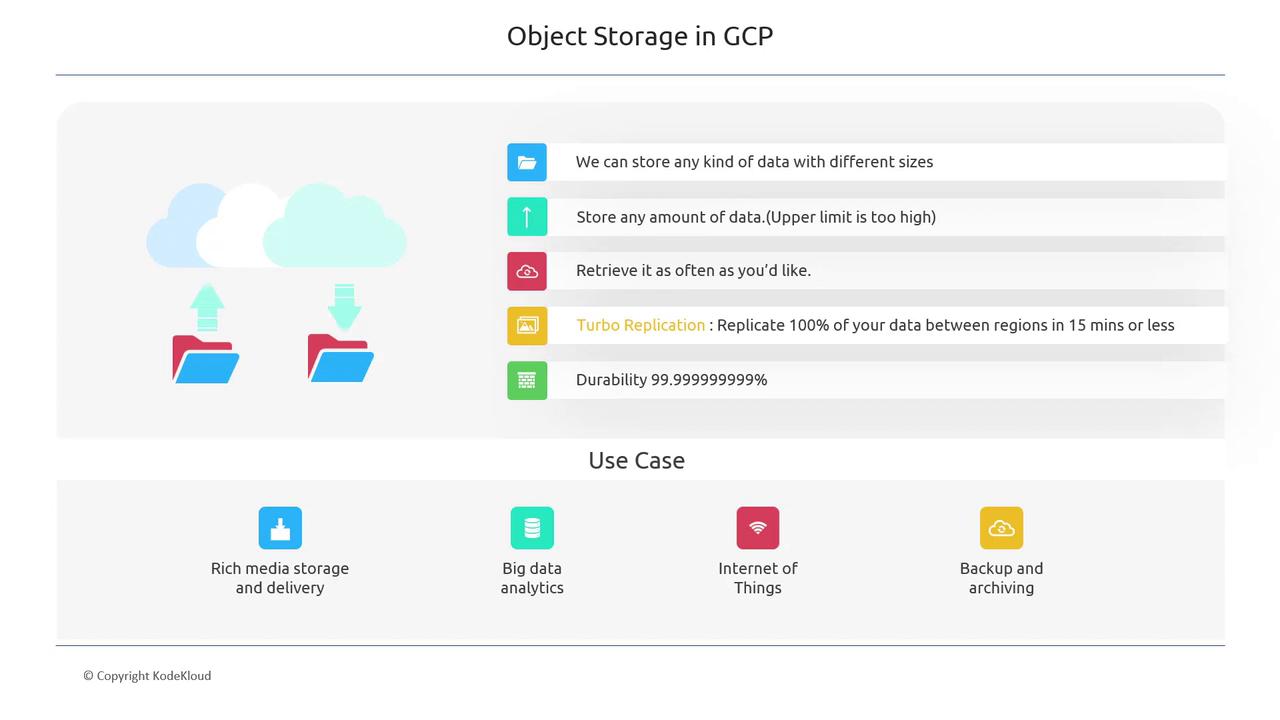GCP Cloud Digital Leader Certification
Object Storage
Object storage and GCP Storage bucket
Welcome back! In this article, we explore the essential concept of object storage and dive into the features of Google Cloud Storage Buckets. Object storage is a type of computer architecture meticulously designed to manage large volumes of unstructured data. A common example is Google Drive, where data is uploaded once, infrequently modified, and efficiently stored without the constraints of traditional folder hierarchies.
Google Cloud Storage leverages this modern architecture by organizing data into containers known as "buckets." Buckets simplify data management and ensure scalability, allowing you to store any type of file—from documents to multimedia files—with ease.

What Is a Google Cloud Storage Bucket?
A Google Cloud Storage Bucket serves as a highly scalable repository that accommodates every type of data including images, audio, video, and files of all sizes. Once created, you can upload files into your bucket while only incurring costs based on actual storage usage. For example, storing 20 gigabytes of data means you will only be billed for that amount, and your charges will increase as you add more data.
Google Cloud Storage bucketing also features turbo replication, which ensures rapid synchronization across regions. When enabled, this feature replicates 100% of your data between different geographical areas in 15 minutes or less. Whether your data is replicated from the US to India or between any other supported regions, you benefit from quick and efficient data distribution.
Data Durability Note
Google Cloud Storage Buckets are engineered for exceptional reliability with durability ratings often described as nine nines. This high durability minimizes the risk of data loss, ensuring your information remains safe and intact.
Key Use Cases
Google Cloud Storage is designed to meet a wide range of modern data storage requirements. Its flexibility makes it ideal for several applications, such as:
- Rich Media Storage and Delivery: Host and deliver high-quality images, videos, and multimedia content seamlessly.
- Big Data Analytics: Utilize buckets as central repositories for analytical workloads and data warehousing.
- Internet of Things (IoT): Aggregate sensor data from numerous IoT devices for analysis and processing.
- Backup and Archival: Securely store backup and archival data for long-term retention and regulatory compliance.
Exam questions and real-world scenarios frequently emphasize these use cases. When selecting a storage solution for backup or archival needs, Google Cloud Storage Buckets often emerge as the optimal choice.

That concludes this article. Thank you for reading, and we look forward to seeing you in the next lesson.
Watch Video
Watch video content